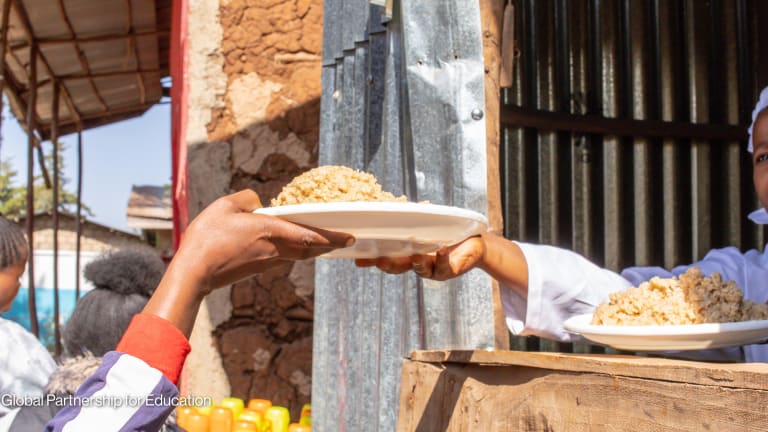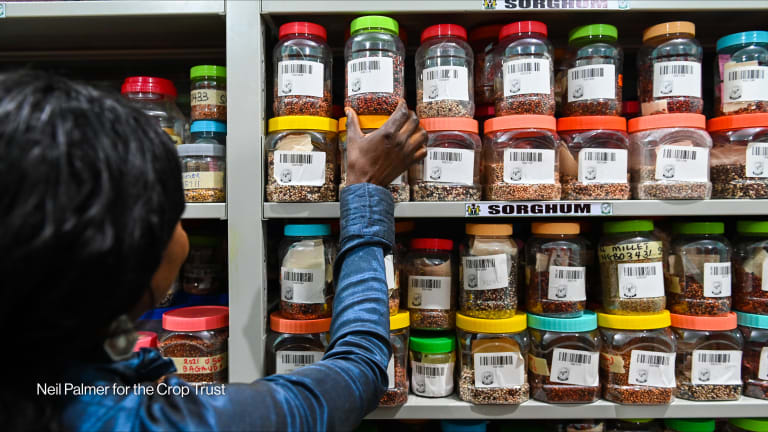
“Hunger, biodiversity, climate change — these advanced conditions do not know national borders. Agrobiodiversity does not know national borders,” Dr. Kent Nnadozie, Ph.D., secretary of the Food and Agriculture Organization’s International Treaty on Plant Genetic Resources for Food and Agriculture, told Devex.
Agrobiodiversity, or agricultural biodiversity, refers to the range of animals, plants, and microorganisms used in food and agriculture for human consumption, fodder, and industrial purposes.
Historically, agrobiodiversity has been substantial: Over the past approximately 12,000 years of agriculture, around 7,000 plant and several thousand animal species have been used for human food. But today, 75% of food production and consumption comes from just 12 plant and five animal species. Such a homogenous system poses a threat not only to the environment, but to humans, as well — with a lack of diverse food sources leading to obesity, higher risk of disease, and malnutrition, particularly in women and children.
Deep dive: Cranking up the heat on climate-resilient crop research
The recent research efforts on crops that can withstand climate change. Plus, it’s not all doom and gloom in the food system world.
Recognizing this threat, in 2006, the Convention on Biological Diversity established the Biodiversity for Food and Nutrition initiative to integrate biodiversity into national food and nutrition strategies. Led by Brazil, Kenya, Sri Lanka, and Turkey, the initiative brought together scientists from the global food security partnership CGIAR and other research organizations, government officials, educators, farmers, chefs, and communities to promote the value of agrobiodiverse, nutrient-rich crops and wild plants.
In Brazil alone, the initiative helped to identify 101 regional species as nutritious foods eligible for government procurement and supported the national school feeding program, PNAE, which provides school meals to about 40 million children.
We spoke to Nnadozie about the challenges and growing opportunities for integrating biodiversity into national food policies.
This conversation has been edited for length and clarity.

What is the relationship between agrobiodiversity and food and nutrition security?
Agribiodiversity enhances dietary diversity as well as adaptation to climate change. A diverse diet provides essential vitamins and minerals —often missing from the staple foods that dominate the system — and addresses issues of malnutrition and dietary diseases.
By definition, any system is as resilient as the diversity of its components — whether it's the human biological system, economic system, or the ecosystem. So, the more diverse our food sources are, the more resilient and healthier we are.
Why should agrobiodiversity be woven into national policies, programs, and markets?
If you don't have the appropriate policy or enabling policy environment, whatever research or initiative that you attempt to deliver will not succeed in any context. Policies that promote agricultural biodiversity strengthen food security, foster climate resilience, and boost the local economy by supporting livelihoods of local communities and farmers.
For biodiversity to reach its full potential, it must be integrated into national policies, including investment strategies and market systems, as well as fiscal measures that governments use in a range of sectors. Both governments and [other] stakeholders need to support farmers in growing diverse crops, invest in the research and breeding of those crops, and ensure that those crops reach consumers.
What challenges do policymakers face in translating science into actionable policies?
One of the critical challenges is the disconnect between the scientific community and policymakers in terms of the language they use and their underpinning approach to issues: Science is based on fact, but policymakers have to take into account all the social, cultural, and political issues.
In concrete terms, the challenge that policymakers face sometimes relates to limited data on the nutritional benefits of traditional crops. Policy integration is weak, but there are also market barriers which do not enable the actual delivery of those crops and varieties to consumers.

The other [challenge] is insufficient investment in research on neglected and underutilized crops, which are now called “opportunity crops.” Additionally, many policymakers don't get institutional support to prioritize biodiversity-based solutions in their national food and agricultural strategies.
CGIAR’s Biodiversity for Food and Nutrition initiative has been extremely successful in Brazil. In what other countries and contexts do you see initiatives like this being implemented?
Brazil’s success demonstrates that science-based policies can enhance food diversity, support local farmers, and improve public health.
Similar approaches can be scaled globally by integrating traditional knowledge with scientific research, leveraging mechanisms that international frameworks provide — such as the [FAO] Multilateral System of the International Treaty — and promoting local biodiversity through school feeding programs and sustainable markets.
The lessons are applicable and adaptable to practically all countries at different levels of development.
Visit Decoding Food Systems — a series amplifying stories from CGIAR’s Flagship Report, Insight to Impact, and exploring the innovative solutions that demonstrate transformative changes on the horizon.
This content is sponsored by CGIAR as part of our Decoding Food Systems series. Click here to learn more.









